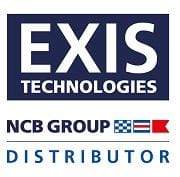Shipowners and managers should better understand ECDIS and electronic chart update management to decrease the risk of negative findings during ship inspections.
London P&I Club joined forces with London Offshore Consultants to develop a guide to commanding ECDIS and electronic navigational charts (ENCs).
London P&I Club noted that the more common failings determined included a lack of:
- ECDIS content in the watch handover checklist.
- Familiarity on behalf of bridge-watchkeeping officers with the manual position-fixing method.
- GPS position cross-checking.
- Understanding of safely applying deep-contour, safety-depth, shallow contour and safety contour.
- Revisions to a ship’s safety management system (SMS) to include ECDIS procedures.
“Managers should ensure the users of such systems, while potentially experienced navigators, are able to apply vital navigation skills such as manual position-fixing and parallel indexing in the ECDIS environment.” -- London P&I Club
ECDIS and ENCs are crucial onboard navigational tools that enhance navigational safety – when well-controlled and in the hands of well-instructed users.
Modern ECDIS systems are now so useful that inadvertent actions of settings may be applied, which can go unnoticed. Safety contour and safety depth functions may be misused rendering the alarm meaningless.

The term “ECDIS Assisted Grounding” is certainly not new. Recurrent themes often include the following:
- Improper use of charts – not using or having the necessary charts for the intended voyage or not applying chart updates frequently and correctly.
- Not following or being aware of the manufacturer’s software maintenance updates and not updating the ECDIS to be compatible with the latest version of the IHO Standards.
- Improper use of the safety settings and built-in safeguards such as route checking and safety alarms related to depths.
- Improper display settings, filters, and scale.
- Not using the route checking function at all or not using it with an appropriate Cross Track Distance (XTD). Not visually checking the route at an appropriate scale.
- Lack of familiarity with the specific ECDIS type onboard.
- Over-reliance on ECDIS and the displayed GPS position.
- Inability to use or lack of familiarity with manual position fixing functions such as range and bearings.
- Handover between deck officers including ECDIS-related information.
When appropriately operated, ECDIS is an exceptional tool that extremely improves situation awareness and operational efficiency, and can reduce errors. On the other hand, the most common operational mistake is the over-reliance or lack of familiarity that can lead to devastating consequences.








